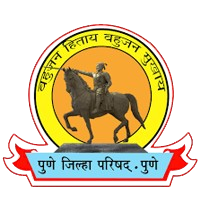Mulshi
Panchayat Committee Mulshi
Taluka Population :
- Taluka Population :-1, 71,006
- Male :-90,053
- Women :-80,953
Panchayat Samiti Mulshi (Paud), is located 35 km west of Pune and is located in a remote and mountainous area in the taluka.
Geographical situation of the taluka: Out of the total geographical area of 103953 hectares, cultivable area is 66737 hectares, area under irrigated land is 25987 hectares, horticultural area is 3151 hectares, arable area is 32432 hectares, forest (fallen) area is 37194 hectares.
Mulshi taluka is located in the hilly area and the geographical area of the taluka is 103953 hectares. There are a total of 143 villages and 92 gram panchayats in the taluka. The average rainfall of the taluka is 1688.7 millimeters. In the current year 2024-25, 2134.6 millimeters have fallen. In Mulshi taluka, the actual area under crop has decreased due to the establishment of factories, IT parks and residential zones. The population is 80,953 females and 90,053 males, totaling 1,71,006 and according to the Poverty Line List 2002-07, the number of families below the poverty line is 4264.
Mulshi taluka includes rivers Mula, Mutha and Walki, while some part of the Pawana river in Maval taluka falls in Mulshi taluka. Tata Group has built Mulshi dam on Mula river. At present, Mulshi and Temghar dams are in the taluka. There are 52 villages beyond Mulshi dam and 17 villages beyond Panshet dam. Although these villages are difficult to access, Mulshi taluka has become 100% open defecation free.
The eastern part of the taluka is adjacent to Pune city and Raigad district is on the west. The surrounding talukas are Haveli, Maval, Velha. Raigad district can be reached through Tamhini Ghat in the western part of the taluka. Lavasa City is located in the southern part of the taluka.
Mulshi taluka is blessed with natural beauty, and rice is the main crop. Since there is a sugar factory at Kasarsai, farmers in the eastern part cultivate sugarcane. In Mulshi taluka, there is a housing project of Sahara Industrial Group with all amenities on approximately 10,000 acres at Ambwane. Also, Lavasa is a project on the same lines in Mutha Valley. There are large industrial estates in the area around Pirangut, and there are offices of world-class industrial groups in the field of information technology in Hinjewadi, due to which the name of Mulshi taluka has come on the world map.
Mhasoba in Kharavade, Mahadev in Nilkantheshwar, Vinzai Mata in Tamhini are also important religious places, and the Mhasoba temple in Kharavade has been declared as a ‘C’ grade pilgrimage site by the government. There are many small and big tourist places in the taluka, and during the monsoon, a large number of nature-loving tourists visit various parts of Mulshi taluka.
There are a total of 92 Gram Panchayats in Mulshi taluka and the headquarters of all government offices in the taluka is at Paud. There is 1 rural hospital in Paud. There are also primary health centers at Male, Maan, Mutha and Ambavane, 26 health sub-centers and a mobile clinic. There are a total of 204 primary schools and 34 secondary schools and 2 colleges in the taluka. There are 174 regular Anganwadis under the Integrated Child Development Service Scheme. There are also a total of 18 veterinary clinics, out of which 9 are of the state government and 9 of the Zilla Parishad. There are a total of 1263 women’s self-help groups in the taluka. All the self-help groups are linked to the Panchayat Samiti under the NRLM campaign. A total of 72 village associations of these linked groups have been established.
To solve the drinking water problem in Mulshi, the government has approved the ambitious project of “Mulshi Regional Scheme” for piped water supply from 10% of the population and 100% of the population has been collected. This project is working.




